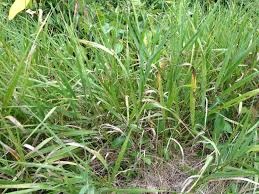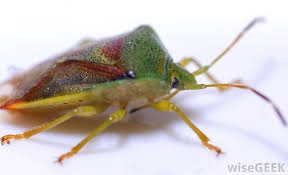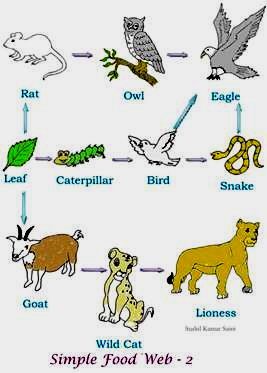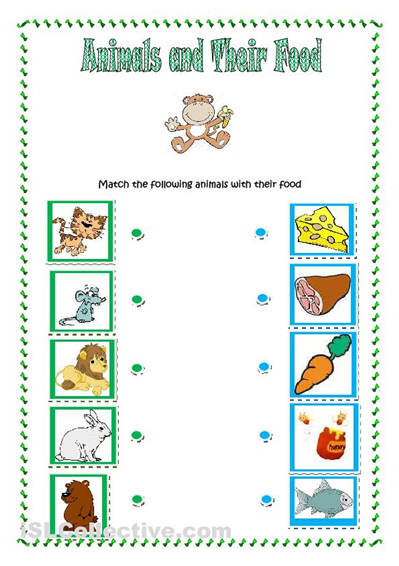
|
Unit 7Food and drink Hot or cold |
School: M.Gorky |
|||||||
|
Date:11.04.2022 |
Teacher name: Rustemova G.D. |
|||||||
|
CLASS: 1 A |
Number present: |
absent: |
||||||
|
Learning objectives(s) that this lesson is contributing to |
1.UE9 use basic present simple forms [positive and negative] to give basic personal information 1.S5 produce words in response to basic prompts 1.L3 recognise with support simple greetings recognise the spoken form of a limited range of basic and everyday classroom words |
|||||||
|
Lesson objectives |
All learners will be able to: |
|||||||
|
||||||||
|
Most learners will be able to: |
||||||||
|
||||||||
|
Some learners will be able to:
|
||||||||
|
||||||||
|
Previous learning |
Hot or cold (Does she /he likes …? Yes, he / she does / No, he/she doesn’t) |
|||||||
|
Plan |
||||||||
|
Planned timings |
Planned activities (replace the notes below with your planned activities) |
Resources |
||||||
|
Beginning 3 minute
10 minutes |
ORGANIZATION MOMENT Hello, boys and girls How are you? What day is it today? What is the weather like today?
WARM UP ACTIVITIES To revise the names of animals pupils play different games.
Apple Pass: Have all Ss sit in a circle. Use a fake apple and toss it to one S. But you must say one English word as you pass. The S then throws to another S and says a different English word. If the student you threw it to drops it, he/she is out. And the game keeps going until you have one winner. It can be played with different categories, such as Food, Animals, Etc.
|
http://www.angles365.com/classroom/fitxers/1r2n/animals02.swf
http://learningapps.org/291804
Apple Pass game http://www.eslkidstuff.com/Gamescontents.htm
|
||||||
|
Middle 10 minutes
|
DEMONSTRATION
1.Teacher presents, using visuals, vocabulary relating to different types of food animals eat grass, fish, bananas, milk, leaves, birds, bugs etc.
.
2.Learners are given worksheets with numbers 1 to 10 written on and options y (for yes), n (for no). Teacher reads out ten questions, e.g. 1.Do cats like milk? 2.Do cows eat eggs? 3. mouse- cheese 4. Dogs- salad 5. Fish- pasta 6.monkey-bananas 7. Horse –steak 8. Tiger- chips 9. Crocodile- cake 10. chickens-rice Learners answer Yes they do./ No they don’t
PLAYING
Feeding animals game: Target language: banana, carrot, grass, honey, milk, seeds, water; bear, birds, cat, dog, monkey, rabbit, sheep; chair, floor, table, window; what, why, where; on, under, on the left, on the right Materials: plates/bowls with food Prepare several bowls of food and place them around the classroom. Pretend you are an old person (you can dress up to look like one, or carry a walking stick); the children are different animals: “I’m a grandma/grandpa and you are animals” (divide the children into groups – a group of bears, birds, cats etc). Tell the students that it is winter, there is a lot of snow and the birds are hungry, so you have something for them. “It’s winter, there is a lot of snow everywhere and animals are hungry. I have got something nice to eat for you.” Gather the first group of animals: “Come here my little (bears), please”, and the bears ask: “Why, why, why?” The dialogue goes as follows: G (grandma): “I have got something nice for you to eat.“ B (bears): “What, what, what?“ G: “Honey. Yummy, it’s sweet.“ B: “Where, where, where?“ G: “Under the chair.“ The bears go to find the honey and say: ”Honey, honey, honey.” Follow this pattern with the other animals
PHYSICAL TRAINING Clap your hands when you hear the name of drinks, stamp your feet when you hear the name of fruit, nod your head when you hear the name of vegetable.
|
PPT
Feeding animals game http://www.english-time.eu/for-teachers/activity/119-feeding-animals/ |
||||||
|
3-5 minutes |
RERLECTION Pupils match animals and their food on the worksheets.
|
http://www.eslprintables.com/Vocabulary_worksheets/The_animals/Animals_and_their_food/
|
||||||
|
Additional information |
||||||||
|
Differentiation – how do you plan to give more support? How do you plan to challenge the more able learners? |
Assessment – how are you planning to check learners’ learning? |
Cross-curricular links |
||||||
|
|
|
||||||
|
Reflection Were the lesson objectives/learning objectives realistic? What did the learners learn today? What was the learning atmosphere like? Did my planned differentiation work well? Did I stick to timings? What changes did I make from my plan and why?
|
Use the space below to reflect on your lesson. Answer the most relevant questions from the box on the left about your lesson. The lesson objectives are realistic The learning atmosphere is creative. The learners learn words of food which animals like. |
|||||||
|
|
||||||||
|
Summary evaluation What two things went really well (consider both teaching and learning)? 1: Word games 2: Work with worksheets What two things would have improved the lesson (consider both teaching and learning)? 1: More practice with answers: “Yes, they do. No, they don’t” 2: Basic food chain diagram story What have I learned from this lesson about the class or individuals that will inform my next lesson? Next lesson I will continue creating stories about food chain with the help of puppet show. |
||||||||
жүктеу мүмкіндігіне ие боласыз
Бұл материал сайт қолданушысы жариялаған. Материалдың ішінде жазылған барлық ақпаратқа жауапкершілікті жариялаған қолданушы жауап береді. Ұстаз тілегі тек ақпаратты таратуға қолдау көрсетеді. Егер материал сіздің авторлық құқығыңызды бұзған болса немесе басқа да себептермен сайттан өшіру керек деп ойласаңыз осында жазыңыз
Ашық сабақ
Ашық сабақ
|
Unit 7Food and drink Hot or cold |
School: M.Gorky |
|||||||
|
Date:11.04.2022 |
Teacher name: Rustemova G.D. |
|||||||
|
CLASS: 1 A |
Number present: |
absent: |
||||||
|
Learning objectives(s) that this lesson is contributing to |
1.UE9 use basic present simple forms [positive and negative] to give basic personal information 1.S5 produce words in response to basic prompts 1.L3 recognise with support simple greetings recognise the spoken form of a limited range of basic and everyday classroom words |
|||||||
|
Lesson objectives |
All learners will be able to: |
|||||||
|
||||||||
|
Most learners will be able to: |
||||||||
|
||||||||
|
Some learners will be able to:
|
||||||||
|
||||||||
|
Previous learning |
Hot or cold (Does she /he likes …? Yes, he / she does / No, he/she doesn’t) |
|||||||
|
Plan |
||||||||
|
Planned timings |
Planned activities (replace the notes below with your planned activities) |
Resources |
||||||
|
Beginning 3 minute
10 minutes |
ORGANIZATION MOMENT Hello, boys and girls How are you? What day is it today? What is the weather like today?
WARM UP ACTIVITIES To revise the names of animals pupils play different games.
Apple Pass: Have all Ss sit in a circle. Use a fake apple and toss it to one S. But you must say one English word as you pass. The S then throws to another S and says a different English word. If the student you threw it to drops it, he/she is out. And the game keeps going until you have one winner. It can be played with different categories, such as Food, Animals, Etc.
|
http://www.angles365.com/classroom/fitxers/1r2n/animals02.swf
http://learningapps.org/291804
Apple Pass game http://www.eslkidstuff.com/Gamescontents.htm
|
||||||
|
Middle 10 minutes
|
DEMONSTRATION
1.Teacher presents, using visuals, vocabulary relating to different types of food animals eat grass, fish, bananas, milk, leaves, birds, bugs etc.
.
2.Learners are given worksheets with numbers 1 to 10 written on and options y (for yes), n (for no). Teacher reads out ten questions, e.g. 1.Do cats like milk? 2.Do cows eat eggs? 3. mouse- cheese 4. Dogs- salad 5. Fish- pasta 6.monkey-bananas 7. Horse –steak 8. Tiger- chips 9. Crocodile- cake 10. chickens-rice Learners answer Yes they do./ No they don’t
PLAYING
Feeding animals game: Target language: banana, carrot, grass, honey, milk, seeds, water; bear, birds, cat, dog, monkey, rabbit, sheep; chair, floor, table, window; what, why, where; on, under, on the left, on the right Materials: plates/bowls with food Prepare several bowls of food and place them around the classroom. Pretend you are an old person (you can dress up to look like one, or carry a walking stick); the children are different animals: “I’m a grandma/grandpa and you are animals” (divide the children into groups – a group of bears, birds, cats etc). Tell the students that it is winter, there is a lot of snow and the birds are hungry, so you have something for them. “It’s winter, there is a lot of snow everywhere and animals are hungry. I have got something nice to eat for you.” Gather the first group of animals: “Come here my little (bears), please”, and the bears ask: “Why, why, why?” The dialogue goes as follows: G (grandma): “I have got something nice for you to eat.“ B (bears): “What, what, what?“ G: “Honey. Yummy, it’s sweet.“ B: “Where, where, where?“ G: “Under the chair.“ The bears go to find the honey and say: ”Honey, honey, honey.” Follow this pattern with the other animals
PHYSICAL TRAINING Clap your hands when you hear the name of drinks, stamp your feet when you hear the name of fruit, nod your head when you hear the name of vegetable.
|
PPT
Feeding animals game http://www.english-time.eu/for-teachers/activity/119-feeding-animals/ |
||||||
|
3-5 minutes |
RERLECTION Pupils match animals and their food on the worksheets.
|
http://www.eslprintables.com/Vocabulary_worksheets/The_animals/Animals_and_their_food/
|
||||||
|
Additional information |
||||||||
|
Differentiation – how do you plan to give more support? How do you plan to challenge the more able learners? |
Assessment – how are you planning to check learners’ learning? |
Cross-curricular links |
||||||
|
|
|
||||||
|
Reflection Were the lesson objectives/learning objectives realistic? What did the learners learn today? What was the learning atmosphere like? Did my planned differentiation work well? Did I stick to timings? What changes did I make from my plan and why?
|
Use the space below to reflect on your lesson. Answer the most relevant questions from the box on the left about your lesson. The lesson objectives are realistic The learning atmosphere is creative. The learners learn words of food which animals like. |
|||||||
|
|
||||||||
|
Summary evaluation What two things went really well (consider both teaching and learning)? 1: Word games 2: Work with worksheets What two things would have improved the lesson (consider both teaching and learning)? 1: More practice with answers: “Yes, they do. No, they don’t” 2: Basic food chain diagram story What have I learned from this lesson about the class or individuals that will inform my next lesson? Next lesson I will continue creating stories about food chain with the help of puppet show. |
||||||||

шағым қалдыра аласыз























